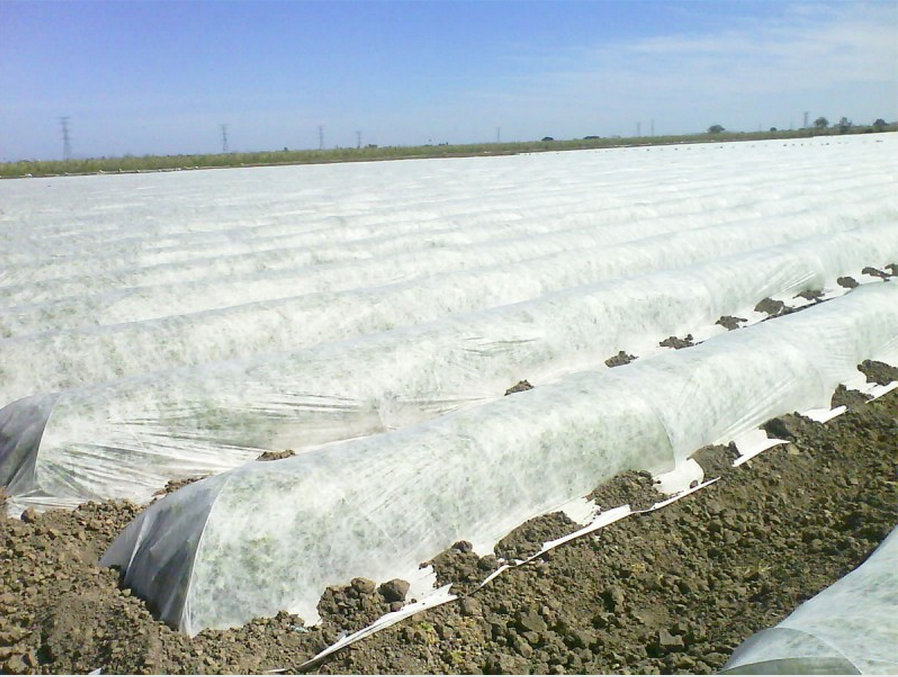Non-Woven Fabrics And Their Uses In Agriculture
Since the beginning of the petrochemical era non-woven fabrics have been made. Non-woven fabrics weren't used for much beyond their softness or bulkiness in packaging, covering, or filled. The rapid advancement of material science has allowed non-woven fabric to be utilized in many fields, including commerce, medicine, civil engineering, and agriculture. It is discovered everywhere, and even in its early agricultural applications. Non-woven fabrics are fabric-like substances made of long and short fibers. They are linked through chemical or heating. The general rule is that woven fabric are more durable and durable than non-woven ones. There are a variety of non-woven fabrics. Non-woven fabric is utilized in a variety of industries. They have a lower production barrier than woven fabric. The non-woven fabric industry and markets are growing, developing and maturing. Check out this agriculture non woven fabric suppliers for more info.
Non-woven Industry Development Non-woven fabric is a product that came out of the petrochemical sector after the development of plastic cloth (film). It is lighter and better air-conditioned than plastic cloth. It is commonly employed in sanitary and medical items like sanitary napkins as well as facial towels, filters, etc., and was later developed and applied in engineering. Non-woven fabrics are used to protect vegetables from damage caused by cold. The manufacturing process of non-woven fabric differs from that of plastic film, however the raw materials used are almost the same. These materials comprise PE (polyvinylchloride), EVA, Ethylene Vinyl Acetate copolymer), EVA and PVA (polyvinyl alcohol). Traditional plastic film is formed into a thin film by melting the plastic and inflating it. The film is continuous. The material expands forever. It is smooth and has no pores. It is a completely impermeable surface that hinders the movement and exchange any molecules. Artificial chemical fibers from the mentioned sources became the favorite of the trade in textiles following the growth of the manufacturing industry. These chemical fibers, however are still able to be transformed into cloth using traditional warp-weft weaving. Non-woven materials are created by weaving the fibers together at different angles across all directions. This is a viable alternative to traditional warp or weaving. It has superior material properties than traditional woven fabrics. The production process can be completed from raw materials to final products in just one step. It is less expensive than traditional weaving that involves spinning yarns out of fibers and then weaving. Non-woven fabrics have been widely employed in the fashion industry in recent times. Thanks to advances in the field of material technology as well as the development of production technologies Non-woven fabric is becoming more diverse and is being utilized more extensively. Different materials and products produced are evident throughout our lives. The growth in non-woven material use in agriculture is due to its lightweight, easy-of-production, diversity, cost effectiveness and wide variety of uses. Look at this non woven landscape fabric for recommendations.

Non-Woven Fabrics in the Agricultural Industries. Non-woven fabrics first appeared in Europe in 1978. They were used to keep carrots warm in the early stages of harvesting, and to prevent the spread of tomato leaf virus and whiteflies. In the United States non-woven fabrics are employed to mulch cantaloupes, sweet peppers, tomatoes roots, carrots, root vegetables and radishes, cabbage lettuce, and many other vegetables. They are used to preserve heat, for early harvesting, and for insect control. Because non-woven materials can help to raise the temperature of soil and also have a high water retention and water retention, they are often used as surfaces like grass-proof mats. To ensure that the roots completely absorb water, the short fibers can be used to create blankets that are water-absorbing. They can also be used as the ground medium used in the production of turf. They are also used as plant bags for larger woody species such as garden trees and fruit trees. Non-woven fabrics are also utilized as crop covers in Taiwan. Non-woven fabrics are used extensively in large greenhouses to aid in energy conservation and environmental protection. Canopy curtains have two layers and help reduce heat absorption and radiation in the evening. TAVIK fabric is a high-density non-woven spun-bonded TAVIK fabric that was utilized in the beginning of protecting and shading cauliflower bulbs. Farmers quickly took to it because of its outstanding shading capability and low thermal conductivity. It also offered an easy recycling process and its ease of acceptance. Later, it was utilized to preserve leaf vegetables and their insect-proof cultivation. Then it was utilized for shading, heating, and protect fruit trees and pineapples. However, due to the unique climate and ecology of Taiwan, the development of the non-woven industry has been slow. The non-woven fabric manufacturers in Taiwan continue to develop non-woven technologies. Their focus is on air permeability and water absorption as well as water repellency. It is being used to preserve and store agricultural product. Check out this agriculture non woven fabric for tips.
